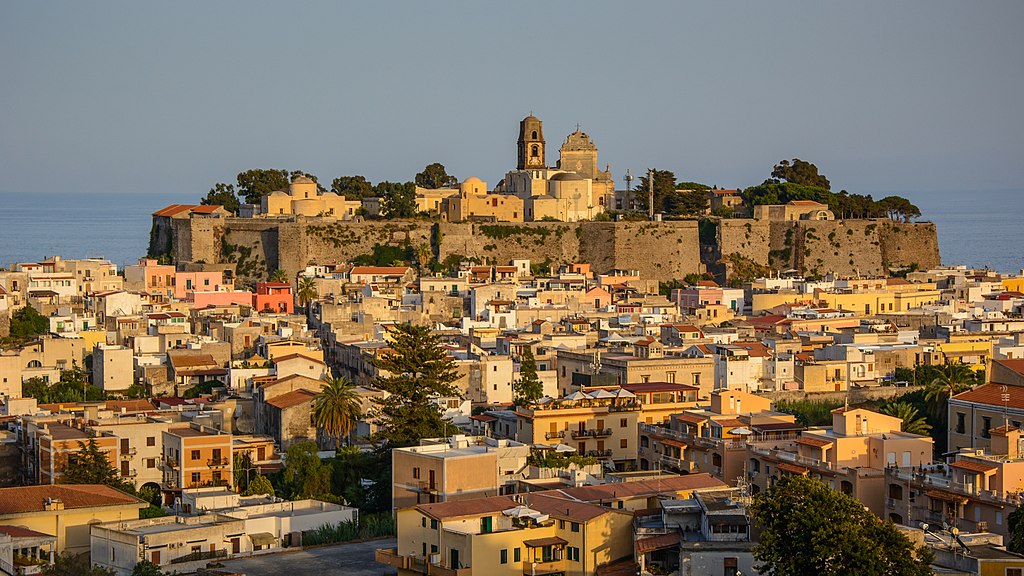
Castello di Lipari
Si tratta della rocca, una cupola di lava vulcanica formatosi circa 40.000 ani fa e sorge al centro di un’ampia baia sulla costa orientale di Lipari, tra Marina Lunga a nord e Marina corta a sud. La rocca è circondata da balze verticali che diventano inaccessibili con in sommità una superficie molto pianeggiante
La fortezza presidiava un porto di eccezionale importanza lungo le rotte commerciali tra l’Italia peninsulare e la Sicilia, corroborando tale funzione attraverso un legame logistico con Patti e Milazzo.
La sua conformazione è frutto delle fortificazioni spagnole fatte costruire da Carlo V nel 1560. Si evidenzia la presenza di una torre di età greca del IV sec. a. C., costruita con blocchi di pietra rossastra disposti su 23 filari in altezza. All’interno della rocca del Castello si conservano cinque chiese: la Chiesa di S Caterina, la Chiesa dell’Addolorata, la Chiesa dell’Immacolata, la Cattedrale dedicata a S. Bartolomeo e la Chiesa della Madonna delle Grazie. La più antica è la Cattedrale, fondata in età normanna nel XII sec. e ricostruita dagli spagnoli nel XVI e XVII sec., dopo la distruzione della stessa da parte del pirata Barbarossa.
Nel 1926 con l’arrivo dei confinati politici, il governo fascista fece demolire ciò che restava delle case antiche e si costruirono due casermoni, uno dei quali oggi ospita il Museo Classico. Nell’area oltre la Cattedrale si conservano invece ancora i vecchi edifici.
(English)
Castle of Lipari
This is the fortress, a dome of volcanic lava formed about 40.000 years ago, and located in the center of a large bay on the east coast of Lipari, between Marina Lunga in the north and Marina Corta in the south. The fortress is surrounded by vertical cliffs that become inaccessible with a very flat surfaces on top.
The Fortress presided over a part of exceptional importance along the trade routes between peninsular Italy and Sicily, corroborating this function through a logistic link with Patti and Milazzo.
Its conformation is the result of the Spanish fortifications built by Charles V in1560. It is highlighted the presence of a tower of the Greek age of the fourth century B.C, built with reddish stone blocks arranged on 23 rows in height.
Inside the fortress of the castle the are five churches: the church of St. Catherine, the church of the Addolorata, the Church of the Immaculate Conception, the Cathedral dedicated to St. Bartholomew, and the Church of the Madonna delle Grazie. The oldest is the Cathedral founded in Norman age in the 12th century and rebuilt by the Spanish in the 16th end 17th centuries, after its destruction by the pirate Barbarossa.
In 1926 with the arrival of political prisoners, the Fascist government had what remained of the old houses demolished and two barracks were built one of which now houses the Classical Museum. In the area beyond the cathedral, however, the old buildings are still preserved.